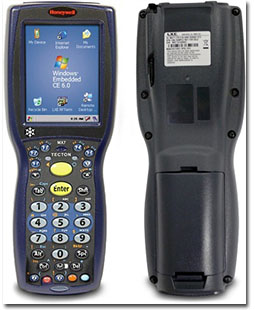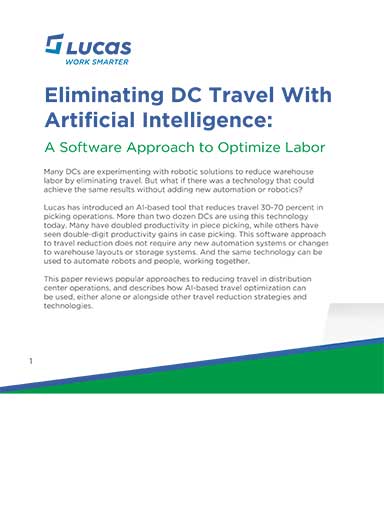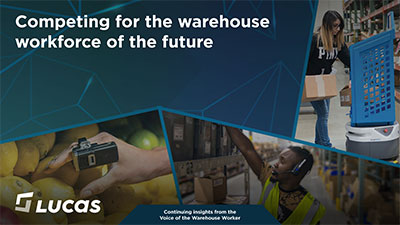The Missing Link in Omni-Channel Fulfillment: Mobile Work Execution

For success in omni-channel retailers have to deliver the right product at the right time, through multiple channels, at the best possible cost.
Retailers are fighting a public battle to deliver a seamless, omni-channel shopping and buying experience across stores, online, and mobile.
They are fighting a no-less important battle behind the scenes to create efficient and speedy product delivery (or pick up) and returns processes to fulfill the anywhere, anytime promise of omni-channel.
This back-end struggle is being played out in distribution/fulfillment centers (DCs) and stores, many of which are “throwing people at the problem.” They are adapting to new delivery and service demands by creating manual processes or workarounds to fill gaps in current fulfillment systems and processes.
The problem is that these people-driven processes are notoriously inefficient and inaccurate. Unless retailers can optimize and adapt these manual processes, they risk losing customer loyalty and face rising operating costs that are unsustainable in the long term.
A new type of Mobile Work Execution software is designed to address these issues. The solutions fill gaps in automation and inventory planning systems (warehouse management systems) in the DC, and create efficient, accurate hands-on processes for workers handling product, whether in a DC or in a store. The solutions combine work planning and management software with mobile, voice-directed applications that can be delivered on smartphones and other lightweight mobile devices that are ideal for in-store or DC use.
Subsequent articles in this series will illustrate how the solutions work in stores and DCs, but first it is worth understanding how the solutions complement and/or extend other systems and technologies that retailers may already have in place.
For success in omni-channel retailers have to deliver the right product at the right time, through multiple channels, at the best possible cost. This places all-new demands on stores as fulfillment and return points, and creates new pressures on distribution centers (DCs) to adapt their existing fulfillment and returns processes. Many retailers are meeting the challenge through manual work-arounds that are unsustainable. This three-part series will focus on how retailers can optimize and evolve manual processes, both in the DC and in-store, using Mobile Work Execution solutions.
Warehouse Device Selection Guide | ||||||
| Category | Examples | Descriptions | ||||
| Handheld | Zebra MC32N0 or MC9500 | Handheld devices are the most common mobile computers used in a warehouse, and the most popular platform for multi-modal voice applications. They combine a screen, keypad and integrated barcode scanner, and some newer models support RFID. Most are available with or without a pistol-grip for use in scan-intensive RF applications. | ||||
| Full Feature Wearable | Zebra WT41N0 | The original “gladiator” type wrist-mount wearables have evolved into powerful, flexible computers with a color touchscreen and keypad to support traditional RF and voice-directed applications. They can be paired with wired or wireless barcode scanners for near-hands-free scanning. Unlike handheld computers, there are far fewer alternatives available in this category. | ||||
| Single Purpose Wearable | Sometimes referred to as voice-only wearables or voice appliances, these devices do not have a screen or keypad, yet they typically cost as much as a full-featured wearable. Similar to full-featured wearables, single-purpose devices can be paired with a wireless barcode scanner. There are a small number of voice-only devices that are made by the manufacturers of traditional wearables, and there are some proprietary voice appliances that will only support the device manufacturer’s voice software. | |||||
| Vehicle Mount Terminal | Zebra VC70 | As the term suggests, these computers are typically mounted to a lift truck or other mobile equipment and include a large screen and keyboard. They are typically paired with a handheld barcode scanner (wired or wireless) for use in RF applications. Newer models that include support for Bluetooth audio are appropriate for voice using wireless headsets. | ||||
| Rugged Smartphones and PDA’s | Samsung Galaxy | Although smartphones originated as a consumer product category, industrial and consumer manufacturers have recently introduced ruggedized smartphones and PDAs that are suitable for use in voice-directed warehouse applications. Many of the devices don’t have a physical keypad, and they are typically smaller and lighter than traditional warehouse devices, with bigger, better touchscreens and greater processing power. They can be paired with wireless barcode scanners, headsets, and smartwatches. | ||||
Download: Buyer’s Guide For Mobile Computers For Warehouse Operations for full chart. | ||||||
The Gap In Planning and Automation Systems
Retailers are investing heavily in systems to improve inventory visibility across the supply chain, and to dynamically determine which sources of products and modes of transportation are best to fulfill orders. But when it comes to the actual hands-on work of filling the order – whether in the DC or in the store – the default is often to rely on manual picking, packing, and shipping processes. Fully manual processes using paper have the benefit of being extremely flexible – you can change processes on the fly - but they are labor-intensive and error prone. Most stores have no existing systems to direct and manage picking and other processes, so this is essentially a technology blank slate.
Unlike stores, most retail DCs have the benefit of existing inventory and planning systems (whether a custom-built host system or WMS) that may organize or direct manual processes. These systems often use mobile computers with barcode scanners that improve accuracy and process consistency, but at a cost of flexibility and efficiency. With the advent of ecommerce and now omni-channel, the requirements for picking, packing, shipping and returns processes have changed to the point where even the most comprehensive, Tier 1 WMSs don’t do a good job optimizing how work is performed on the DC floor.
Likewise, many traditional retail DCs have also installed significant automation systems, but in most cases those systems are intended to address either traditional store replenishment or direct-to-consumer fulfillment, but not both. And even DCs with significant automation are likely to have some manual work processes. In short, there is still a missing link. Neither WMS nor automated systems are designed to optimize manual, hands-on activities that still predominate between islands of automation. For that you need software systems that can optimize, sequence and orchestrate the detailed activities done by mobile workers. That’s exactly the activity that Mobile Work Execution solutions are designed to address.
Introducing Mobile Work Execution
Mobile Work Execution systems supplement a DC’s inventory planning systems, but they focus on optimizing and orchestrating the work done by people. They include mobile, “hands-free” applications to improve manual work using voice direction, speech recognition, barcode scanning, device screens and other mobile technologies. These applications can run on rugged smartphones and connect with barcode scanners and/or other “smart” accessories, such as smartwatches and glasses.
Beyond improving the mechanics of hands-on tasks, the solutions include server-based software that optimizes workflows and manages complex processes. For stores, Mobile Work Execution fills the void in systems designed to manage receiving, picking, returns and other tasks. In DCs, the solutions allow retailers to reengineer traditional processes to get the full benefit of mobile technologies. So instead of simply voice-enabling existing WMS-driven processes that lack the flexibility to support omni-channel strategies, retailers can quickly implement and adapt their hands-on processes.
The next installment of this series will examine in detail how Mobile Work Execution is used alongside WMS and automation systems in a DC. The final part in the series will explore opportunities for extending these solutions to address fulfillment and returns processes in stores.
Related: Mobile Work Execution is the Missing Link in Distribution Center Operations

Article Topics
Lucas Systems News & Resources
Warehouse Gamification Boosting Employee Engagement, Productivity Study: gamification entices 84% of warehouse workers Lucas Systems, Carnegie Mellon University partner on packaging challenges Automatic data capture (ADC): Accelerating the process Upping the health of distribution center (DC) picking Warehouse execution systems (WES) stretches to encompass labor Labor Management: Technology + Methods = Progress More Lucas SystemsLatest in Technology
Spotlight Startup: Cart.com is Reimagining Logistics Walmart and Swisslog Expand Partnership with New Texas Facility Taking Stock of Today’s Robotics Market and What the Future Holds Biden Gives Samsung $6.4 Billion For Texas Semiconductor Plants Apple Overtaken as World’s Largest Phone Seller Walmart Unleashes Autonomous Lift Trucks at Four High-Tech DCs Talking Supply Chain: Procurement and the AI revolution More Technology














